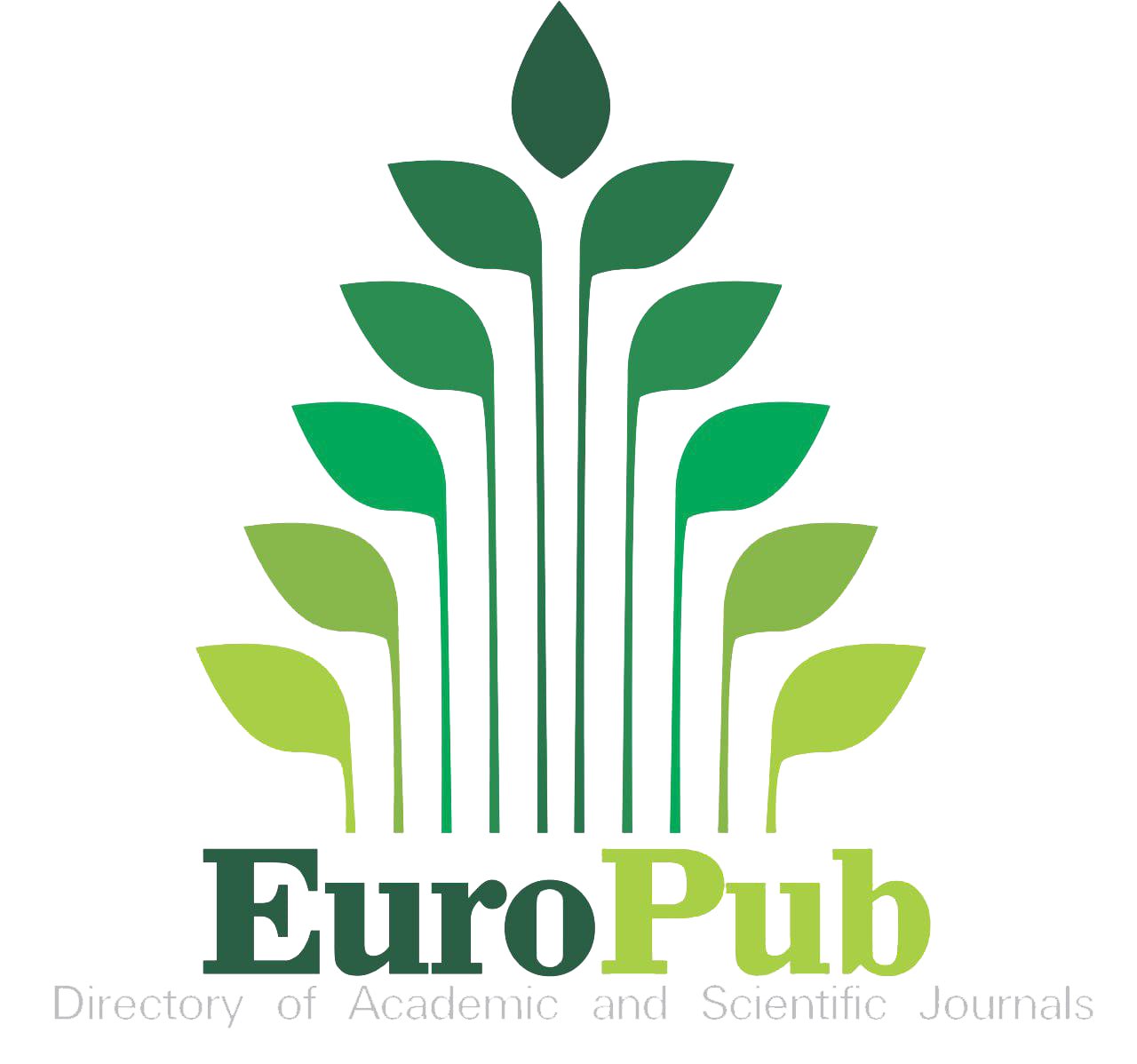Abstract
Background:Sepsis is a major complication for seriously ill people with shock, major infections, serious burns, or severe trauma. Inflammation imbalance is the primary underlying cause of sepsis progression and persists continuously over the entire sepsis course. Empagliflozin is an orally administered medication for diabetes that selectively inhibits sodium-glucose cotransporter 2 to improve kidney elimination of glucose. It has been discovered that sodium-glucose cotransporter 2 exhibit anti inflammation and multiple effects, suggesting that they may be beneficial and prevent infections. Aim of study:This study was undertaken to assess Empagliflozin's cardioprotective efficacy in septic mice through its potent anti- inflammatory and anti- apoptotic effects by decreasing the cardiac marker N-terminal pro–brain natriuretic peptide, the pro-inflammatory markers Nuclear factor kappa B and interleukin-6, and the apoptotic marker caspase-3. Methods:The study involved 35 male Swiss albino mice from Cancer Research Center in Iraq. They weighed 30 to 35g and were 8 to 12 weeks old, housed in an animal house at the University of Kufa. There were five groups of mice(n=7): (control group)Mice was received their normal diets prior to sampling, (sham group)Mice was exposed to anesthesia and laparotomies,(sepsis group)Mice was exposed to the cecal ligation and puncture technique,(vehicle group)Mice were given the same quantity ofdimethyl sulfoxide once daily for three days prior to thececal ligation and puncture; the last dose was given an hour before to thececal ligation and puncture, and (Empagliflozin-treated group)Mice was received intraperitoneal injections of Empagliflozin at a daily dosage of 10/mg/kg for three days before to the cecal ligation and puncture; the final dose was given an hour before to the cecal ligation and puncture. To determine the serum level of N-terminal pro–brain natriuretic peptide, laparotomy was performed and blood was collected directly from the heart. While tissue samples were collected from hearts to measure nuclear factor kappa B, interleukin-6, and caspase-3 levels by using Enzyme Linked Immunosorbent Assay kits. Histological examinations were performed on the heart histological sections, assessing the degree of heart injury and scoring system parameters. Results:Compared to the control and sham groups, the sepsis and vehicle groups had significantly increased mean levels of N-Terminal Pro–Brain Natriuretic Peptide, Nuclear factor kappa B, Interleukin-6, and Caspase-3. Compared to the sepsis and vehicle groups, the Empagliflozin-treated group had significantly lowered mean level ofN-Terminal Pro–Brain NatriureticPeptide, Nuclear factor kappa B, Interleukin-6, and Caspase-3.The histopathological analysis of the control and sham groups for heart tissue revealed normal morphology. Sepsis and vehicle groups for myocardium exhibit significant cardiac tissue damage. Empagliflozin-treated group showed low myocardial damage. Conclusion: The present study revealed that Empagliflozin cause significant improvement in heart function through anti-inflammatory and anti-apoptotic effects via down regulation of the cardiac marker N-terminal pro–brain natriuretic peptide, the pro-inflammatory markers Nuclear factor kappa B and interleukin-6, and the apoptotic marker caspase-3.
Recommended Citation
Al-killidar, Safwa Miqdad and Muhammad-Baqir, Bashaer M.
(2025)
"The Possible CardioprotectiveEffect of Empagliflozin During Endotoxemia in Mice Model,"
Maaen Journal for Medical Sciences: Vol. 4
:
Iss.
2
, Article 5.
Available at: https://doi.org/10.55810/2789-9136.1074
References
[1] Varpula M, Pulkki K, Karlsson S, Ruokonen E, Pettila V, € Finnsepsis Study Group. Predictive value of N-terminal probrain natriuretic peptide in severe sepsis and septic shock. Crit Care Med 2007;35(5):1277e83.
[2] Watson RS, Carcillo JA, Linde-Zwirble WT, Clermont G, Lidicker J, Angus DC. The epidemiology of severe sepsis in children in the United States. Am J Respir Crit Care Med 2003;167(5):695e701.
[3] Rudd KE, Johnson SC, Agesa KM, Shackelford KA, Tsoi D, Kievlan DR, et al. Global, regional, and national sepsis incidence and mortality, 1990-2017: analysis for the Global Burden of Disease Study. Lancet (London, England) 2020; 395(10219):200e11.
[4] Ahn J, Kim J. Mechanisms and consequences of inflammatory signaling in the myocardium. Curr Hypertens Rep 2012; 14:510e6.
[5] Ammann P, Maggiorini M, Bertel O, Haenseler E, JollerJemelka HI, Oechslin E, et al. Troponin as a risk factor for mortality in critically ill patients without acute coronary syndromes. J Am Coll Cardiol 2003;41(11):2004e9.
[6] Saito S, Uchino S, Hayakawa M, Yamakawa K, Kudo D, Iizuka Y, et al. Epidemiology of disseminated intravascular coagulation in sepsis and validation of scoring systems. J Crit Care 2019;50:23e30.
[7] Arulkumaran N, Deutschman CS, Pinsky MR, Zuckerbraun B, Schumacker PT, Gomez H, et al. Mitochondrial Function in sepsis. Shock (Augusta, Ga.) 2016;45(3):271e81
. [8] Ehrman RR, Sullivan AN, Favot MJ, Sherwin RL, Reynolds CA, Abidov A, et al. Pathophysiology, echocardiographic evaluation, biomarker findings, and prognostic implications of septic cardiomyopathy: a review of the literature. Critical Care (London, England) 2018;22(1):112.
[9] Byrne NJ, Parajuli N, Levasseur JL, Boisvenue J, Beker DL, Masson G. Empagliflozin prevents worsening of cardiac function in an experimental model of pressure overloadinduced heart failure. JACC (J Am Coll Cardiol) 2017;2(4): 347e54. Basic to translational science.
[10] Rashid AM, Khan MS, Fudim M, DeWald TA, DeVore A, Butler J. Management of heart failure with reduced ejection fraction. Curr Probl Cardiol 2023;48(5):101596.
[11] Xu L, Nagata N, Nagashimada M, Zhuge F, Ni Y, Chen G, et al. SGLT2 Inhibition by Empagliflozin Promotes Fat Utilization and Browning and Attenuates Inflammation and Insulin Resistance by Polarizing M2 Macrophages in Dietinduced Obese Mice. Biomedicine 2017;20:137e49.
[12] Cheng ST, Chen L, Li SY, Mayoux E, Leung PS. The Effects of Empagliflozin, an SGLT2 Inhibitor, on Pancreatic b-Cell Mass and Glucose Homeostasis in Type 1 Diabetes. PloS One 2016;11(1):e0147391.
[13] Aroor AR, Das NA, Carpenter AJ, Habibi J, Jia G, RamirezPerez FI, et al. Glycemic control by the SGLT2 inhibitor empagliflozin decreases aortic stiffness, renal resistivity index and kidney injury. Cardiovasc Diabetol 2018;17(1): 108.
[14] Fitchett D, Zinman B, Wanner C, Lachin JM, Hantel S, Salsali A, et al. Heart failure outcomes with empagliflozin in patients with type 2 diabetes at high cardiovascular risk: results of the EMPA-REG OUTCOME® trial. Eur Heart J 2016;37(19):1526e34.
[15] Chilton R, Tikkanen I, Cannon CP, Crowe S, Woerle HJ, Broedl UC, et al. Effects of empagliflozin on blood pressure and markers of arterial stiffness and vascular resistance in patients with type 2 diabetes. Diabetes Obes Metabol 2015; 17(12):1180e93.
[16] Ferrannini E, Mark M, Mayoux E. CV Protection in the EMPA-REG OUTCOME Trial: A "Thrifty Substrate" Hypothesis. Diabetes Care 2016;39(7):1108e14.
[17] Barõs¸ VO, Din € çsoy AB, Gedikli E, Zõrh S, Müftüoglu S, Erdem A. Empagliflozin Significantly Prevents the Doxorubicin-induced Acute Cardiotoxicity via Non-antioxidant Pathways. Cardiovasc Toxicol 2021;21(9):747e58.
[18] Vasilakou D, Karagiannis T, Athanasiadou E, Mainou M, Liakos A, Bekiari E, et al. Sodium-glucose cotransporter 2 inhibitors for type 2 diabetes: a systematic review and metaanalysis. Ann Intern Med 2013;159(4):262e74.
[19] Lee YT, Hsu CN, Fu CM, et al. Comparison of Adverse Kidney Outcomes with Empagliflozin and Linagliptin Use in MA'AEN JOURNAL FOR MEDICAL SCIENCES 2025;4:74e82 81 Patients With Type 2 Diabetic Patients in a Real-World Setting. Front Pharmacol 2021;12(December):1e11.
[20] Feola M, Lombardo E, Testa M, Avogadri E, Piccolo S, Vado A. Prognostic factors of mid-term clinical outcome in congestive heart failure patients discharged after acute decompensation. Arch Med Sci: AMS 2012;8(3):462e70.
[21] Aggarwal BB. Signalling pathways of the TNF superfamily: a double-edged sword. Nature reviews. Immunology 2003;3(9): 745e56.
[22] Ghazi A, Abood SH, Alaqouli H, Hadi N, Janabi SAMAM. Ibudilast and octreotide can ameliorate acute pancreatitis via downregulation of theinflammatory cytokines and Nuclear Factor-Kappa B expression. Ann. Trop. Med. Public Health 2019;22:1e7.
[23] Tanaka T, Narazaki M, Kishimoto T. IL-6 in inflammation, immunity, and disease. Cold Spring Harbor Perspect Biol 2014;6(10). a016295.
[24] Thompson DK, Huffman KM, Kraus WE, Kraus VB. Critical appraisal of four IL-6 immunoassays. PLoS One 2012;7(2): e30659.
[25] Asadi M, Taghizadeh S, Kaviani E, Vakili O, TaheriAnganeh M, Tahamtan M, Savardashtaki A. Caspase-3: structure, function, and biotechnological aspects. Biotechnol Appl Biochem 2022;69(4):1633e45.
[26] Koyani CN, Plastira I, Sourij H, Hallstrom S, Schmidt A, € Rainer PP, et al. Empagliflozin protects heart from inflammation and energy depletion via AMPK activation. Pharmacol Res 2020;158(104870). https://doi.org/10.1016/j.phrs. 2020.104870.
[27] Mohammad AR, Shnaien AA, Alabsawy SK, Hassan ES. Protective Effect of Ipragliflozin on Acute Brain Injury Induced by Endotoxemia in Mice. Iran J War Public Health 2023;15(3):225e31.
[28] Wellington D, Mikaelian I, Singer L. Comparison of ketamine-xylazine and ketamine-dexmedetomidine anesthesia and intraperitoneal tolerance in rats. Jo Am Assoc Lab Animal Sci : JAALAS 2013;52(4):481e7.
[29] Quagliariello V, De Laurentiis M, Rea D, et al. The SGLT-2 inhibitor empagliflozin improves myocardial strain, reduces cardiac fibrosis and pro-inflammatory cytokines in nondiabetic mice treated with doxorubicin. Cardiovasc Diabetol 2021;20(1):1e20.
[30] Al-Sabaawy HB, Rahawi AM, Al-Mahmood SS. Standard techniques for formalin-fixed paraffin-embedded tissue: A Pathologist's perspective. Iraqi Journal of Veterinary Sciences 2021;35(Supplement I-III):127e35.
[31] Zingarelli B, Salzman AL, Szabo C. Genetic disruption of poly (ADP-ribose) synthetase inhibits the expression of Pselectin and intercellular adhesion molecule-1 in myocardial ischemia/reperfusion injury. Circ Res 1998;83(1):85e94.
[32] Rhodes A, Evans LE, Alhazzani W, Levy MM, Antonelli M, Ferrer R, et al. Surviving sepsis campaign: international guidelines for management of sepsis and septic shock: 2016. Intensive Care Med 2017;43:304e77.
[33] Zhang XH, Dong Y, Chen YD, Zhou P, Wang JD, Wen FQ. Serum N-terminal pro-brain natriuretic peptide level is a significant prognostic factor in patients with severe sepsis among Southwest Chinese population. Eur Rev Med Pharmacol Sci 2013;17(4):517e21.
[34] Lin C-w, Tang W, Wen F, Chen J-j, Zeng X-l, Chen Z-g. Diagnostic Accuracy of NT-ProBNP for Heart Failure with Sepsis in Patients Younger than 18 Years. PLoS ONE 2016; 11(1):e0147930.
[35] von Lewinski D, Kolesnik E, Tripolt NJ, Pferschy PN, Benedikt M, Wallner M, et al. Empagliflozin in acute myocardial infarction: the EMMY trial. Eur Heart J 2022; 43(41):4421e32.
[36] Lv C, Hu C, Zhu C, Wan X, Chen C, Ji X, et al. Empagliflozin alleviates the development of autoimmune myocarditis via inhibiting NF-kB-dependent cardiomyocyte pyroptosis. Biomed Pharmacother 2024;170:115963.
[37] Yousif NG, Hadi NR, Zigam QA, Altimimi AN. Cardio protective Effects of Eritoran during Polymicrobial Sepsis through Decreases of p38MAPK/NF-kB Signaling Pathway. Prensa Med Argent 2020:S1e18.
[38] Majid Z, Baqir BM, Al-Shimerty DF, Hadi NR. Ghrelin attenuates the inflammatory response induced by experimental endotoxemia in mice. Indexed in pubmed/medline, scopus, embase, ebsco, index Copernicus, polish ministry of education and science, polish medical bibliography 2024; 77(4):652e8.
[39] Zanders L, Kny M, Hahn A, Schmidt S, Wundersitz S, Todiras M, et al. Sepsis induces interleukin 6, gp130/JAK2/ STAT3, and muscle wasting. Journal of cachexia, sarcopenia and muscle 2022;13(1):713e27.
[40] Yu B, Chen M, Zhang Y, Cao Y, Yang J, Wei B, et al. Diagnostic and Prognostic Value of Interleukin-6 in Emergency Department Sepsis Patients. Infect Drug Resist 2022;15: 5557e66.
[41] Park HJ, Han H, Oh EY, Kim SR, Park KH, Lee JH, et al. Empagliflozin and Dulaglutide are effective against obesityinducedairway hyperresponsiveness and fibrosis in a murinemodel. Sci Rep 2019;9:15601.
[42] Maayah ZH, Ferdaoussi M, Takahara S, Soni S, Dyck JRB. Empagliflozin suppresses inflammation and protects against acute septic renal injury. Inflammopharmacology 2021;29(1): 269e79.
[43] Zhang M, Wang X, Bai B, Zhang R, Li Y, Wang Y. Oxymatrine protects against sepsis-induced myocardial injury via inhibition of the TNF-a/p38-MAPK/caspase-3 signaling pathway. Mol Med Rep 2016;14(1):551e9.
[44] Wang C, Yuan W, Hu A, Lin J, Xia Z, Yang CF, Zhang Z. Dexmedetomidine alleviated sepsis-induced myocardial ferroptosis and septic heart injury. Mol Med Rep 2020;22(1): 175e84.
[45] Albakaa RN, Rizij FA, Hassan RMA. Potential Role of Empagliflozin to Ameliorate Doxorubicin Induced Cardiotoxicity in Male Rats.. 2023
[46] Yang W, Li X, He L, Zhu S, Lai S, Zhang X, et al. Empagliflozin improves renal ischemiaereperfusion injury by reducing inflammation and enhancing mitochondrial fusion through AMPKeOPA1 pathway promotion. Cell Mol Biol Lett 2023;28(1):42.
[47] Chen L, Tian Q, Shi Z, Qiu Y, Lu Q, Liu C. Melatonin alleviates cardiac function in sepsis-caused myocarditis via maintenance of mitochondrial function. Front Nutr 2021;8: 754235.
[48] Zigam QA, Al-Zubaidy AA, Sami Z, Abbas WJ. The Effects of Levosimendan Against Sepsis-Induced Cardiotoxicity in Mice Model. J Med Chem Sci 2023;6(3):634e44. https:// doi.org/10.26655/JMCHEMSCI.2023.3.20
















Indexed in: